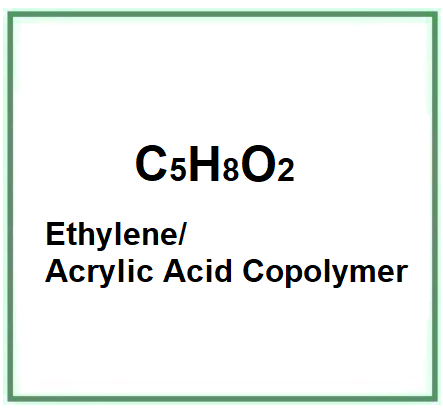Ethylene/Acrylic Acid Copolymer is a chemical compound, 2-Propenoic acid, polymer with ethene.
The name describes the structure of the molecule
- "Ethylene" is a simple hydrocarbon and a common monomer used in the production of various polymers and it's known for its ability to form flexible polymer chains.
- "Acrylic Acid" is another monomer that, when polymerized, imparts specific properties to the resulting polymer, such as the ability to form polymer structures with acidic functional groups.
- "Copolymer" indicates that the product is a polymer formed from two different monomers, in this case, ethylene and acrylic acid.
Description of raw materials used in production
- Ethylene - A colorless gas primarily derived from petroleum and natural gas.
- Acrylic Acid - A colorless liquid with a pungent smell.
Step-by-step summary of industrial chemical synthesis process
- Preparation - Ethylene and acrylic acid are prepared and purified.
- Polymerization - Ethylene and acrylic acid are fed into a polymerizing reactor under controlled pressure and temperature. Catalysts and initiators are used to start the reaction.
- Copolymer Recovery - Once polymerization is complete, the copolymer is extracted from the reactor.
- Purification - The product is purified to remove any unreacted monomers or other impurities.
- Granulation or Formulation - The copolymer is processed into pellets or other useful forms for end applications.
It appears in the form of granules or white powder

What it is for and where
Cosmetics
Binder agent. Ingredient that is used in cosmetic, food and pharmaceutical products as an anti-caking agent with the function of making the product in which it is incorporated silky, compact and homogenous. The binder, either natural such as mucilage, gums and starches or chemical, may be in the form of a powder or liquid.
Emulsion stabiliser. Emulsions are thermodynamically unstable. Emulsion stabilisers improve the formation and stability of single and double emulsions. as well as their shelf-life. It should be noted that in the structure-function relationship, the molar mass of the ingredient used plays an important role.
Film-forming agent. It produces, upon application, a very thin continuous film with an optimal balance of cohesion, adhesion and stickiness on skin, hair or nails to counteract or limit damage from external phenomena such as chemicals, UV rays and pollution.
Opacifying agent. It is useful into formulations that may be translucent or transparent to make them opaque and less permeable to light.
Commercial Applications
Cosmetics and Skincare. Acts as a thickening and stabilizing agent in creams, lotions, and other skincare products.
Hair Care Products. Used in shampoos, conditioners, and hair treatments to improve the texture and feel of the products.
Makeup. Found in products such as foundations and primers to enhance product spread and staying power on the skin.
Sun Care Products. Can be used in sun lotions to enhance consistency and application.
- Molecular Formula C5H8O2
- Molecular Weight 100.12 g/mol
- CAS 9010-77-9
- UNII 1PEZ3NLY6I
- EC Number 639-893-2
Synonyms:
- ethene;prop-2-enoic acid
- ASENSA SC 400
![]() Ethylene/Acrylic Acid Copolymer
Ethylene/Acrylic Acid Copolymer 




